Margot Note's Blog, page 24
May 17, 2021
Leadership and Your Organization’s History
Most executives focus on the present and the future. When an organization’s history comes up, it is usually in connection with an anniversary. A changing world leaves little time for nostalgia. However, leaders with a sense of history know that understanding the past is a powerful tool for shaping the future.
Leaders inspire efforts and devise strategies for the future by harnessing organizational history. As a leader strives to engage people collectively, communicating the enterprise’s history instills a sense of identity and purpose. Leaders use history to advocate for change and motivate people to overcome challenges. It acts as a problem-solving tool, one that offers insights and meaningful perspectives.
History as a Management and Leadership ToolStudying history entails the ability to:
Explain the flow of events as a process over time, not just a sequence of isolated happenings.
Approach the past with a sense of surprise—that is, regard events as uncertain and thus recapture them unaffected by their outcomes.
Treat the past on its terms and in ways comprehensible to people of the time. People often distort the past through the lens of their experiences, ideas, and values.
Understand historical events in their contemporary social, intellectual, political, and economic contexts.
Shared HistoryA shared history binds people to a community and imbues a group identity. A narrative history helps people understand what is happening around them. Knowing an organization’s history can help employees see events as something larger than themselves.
Managing ChangeHistory transforms cultures. Change is challenging for people to embrace. Leaders can look beyond today’s stories to discover other ones. Even when the future can be discerned in the past, leaders can use their history to explain how the organization needs change and why actions are necessary to adapt to a new way of doing things.
To lead with a sense of history acknowledges its power. An organization’s culture and capabilities, development, and interactions with external forces shape the choices leaders make and influence how people think about the future.
A Way ForwardGreat leaders never ignore history until the time comes to plan their organization’s next anniversary. They think about the past in the present. They make their organization’s experience an explicit part of their thinking to discern what form change should take. They find a rich source of stories to motivate people to embrace change even in the worst of times. In doing so, they manage their companies more effectively and find their place in history.
Applying History to Your OrganizationWork with an expert with experience in capturing and preserving organizational history. Learn more about how I might help you by clicking the contact button below.
Contact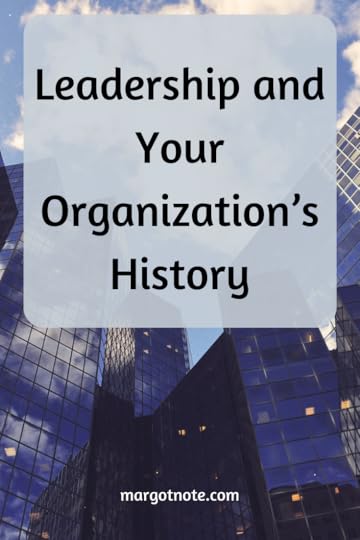
May 10, 2021
Why Your Organization Needs an Archives
The purpose of an archives is to preserve and make accessible the records of enduring value of an organization. Many organizations have established successful archives programs to leverage their most unique asset: their history. Archives are the direct by-products of an organization’s functions, providing a testament to its core values, accessible corporate memory, and information to shape its future. Since every company has a history, the benefits of an archival program are independent of size, prestige, and industry.
The Benefits of An ArchivesAn archival program provides a return on investment for your organization. Like other institutional resources, archival materials are assets that can help you:
Reduce operating costs through efficient information retrieval
Contribute to a sound risk management program
Communicate stability in times of change
Maximize your company’s reputation and brand
Provide great content for marketing and public relations activities
Strengthen loyalty through showcasing achievements
Preserve corporate memory and organizational heritage
Conduct business intelligence services
Support the legal department
Recognize the accomplishments of employees
Track philanthropic activities over time
Establish business continuity
Centralize and improve the efficiency of information
A well-organized archival program allows you to identify, save, and retrieve the information you need while safely removing the material you do not. Maintaining institutional knowledge through an archives gives organizations a competitive edge.
Get StartedWork with an expert with experience in capturing and preserving organizational history. Learn more about how I might help you by clicking the contact button below.
Contact
May 3, 2021
The Importance of Archival Description
Researchers are demanding greater access to archival collections. At the same time, archives often reduce the level of processing. Can current descriptive standards and developments help solve this dilemma?
An inherent tension exists between providing access and describing archival holdings appropriately.
Finding aids and bibliographic records contain archival description for discovery, management, and understanding. Descriptions detail collection characteristics, content, and purpose. Describing archival materials require archivists to analyze, organize, and note details about the collections, such as creators, titles, dates, extent, and contents.
Although finding aids were created to describe content, they were not created to share information with a wider audience, especially those who use a cataloging database system. Basic archival principles can be brought into bibliographic description in several ways. Archivists recognize the importance of provenance in archival description. They understand that description should be at the group level since most archival material exists at this level. In addition, archival materials are preserved for reasons different from those for which they were created. They also require the flexibility of various levels of description.
Encoded Archival DescriptionEAD (Encoded Archival Description) was initiated in 1993 through the University of California’s Berkeley Finding Aid project. The goal was to create a standard for describing archives and manuscripts in a machine-readable format. By standardizing description, organizations such as the Research Library Group (RLG) can index the information and allow users to search the collections of repositories across the country.
Developing Encoded Archival Description (EAD) supplied a tool to help mitigate the geographic distribution of collections, which limited the ability of researchers to use primary sources. The goal of EAD is universal intellectual access. Researchers have always urged the off- and online publication of archival holdings to make their work easier. Descriptive coding involves designating what each important component is. Making MARC a description markup system ensured that information could be exploited in multiple ways and made it possible to apply future uses unknown in the early stages of development. The success with MARC AMC, which described at the collection level, made it possible to make finding aids available through EADs.
The development of the format has led archivists to think more systematically about how archival work is conducted. Additionally, archivists realized the benefit of following standards, after a long tradition of using idiosyncratic descriptive practices.
The EAD’s DTD (document type definition) specifies the elements to describe a collection and the arrangement of those elements. DTD’s goals are naming and defining elements, naming and defining attributes, and deciding where and in what sequence elements should appear. The DTD structure could be used for new archival finding aids and existing finding aids. The elements were repeatable to mimic the hierarchical structure of finding aids.
Authority InformationProvenance can be used as a basis of access and retrieval and not just as an underlying concept for arrangement. Provenance information—information about the records creators—can be used as authority information.
Archivists must be able to separate information about records creators from information about the records themselves. There is a benefit to building the authority information into the system instead of having separate authority files, as generally exist in libraries. Again, this makes even more sense in an era when a smaller percentage of an institution’s users come to the repository.
Function plays a role in arrangement and description in terms of access. Functions exist but are not always carried out by the same agency over time. A need exists to track that function, whether the name of the office or its place in the larger organization changes.
The fluidity of function leads to the notion that one series could belong to several records groups over time. Again, there is a hierarchy for the organization but not for the records.
Change and ContinuityArchival description encompasses the dual processes of cataloging and production of finding aids. The complexities of modern organizations and the detachment of description (especially online) from the actual materials have complicated descriptive practices for archivists.
The blog was originally published on Lucidea's blog.

April 26, 2021
Appraisal of Records of Enduring Value
Appraisal identifies materials offered to an archives that have sufficient value to be accessioned. It can also be defined as the process of determining the length of time records should be retained, based on legal requirements and their current and potential usefulness.
Selection identifies materials to be preserved because of their enduring value, especially items to be transferred to an archives.
Although the definitions are close, nuances exist. Appraisal often gets confused with monetary appraisal, which archivists must avoid. Selecting is an active verb. One might argue that appraising is active, but it is true that the assessment of value would lead to selecting for acquisition. Selection is also a more concise word for what the archivist does. Archivists are, as is true for other professions, often accused of speaking in code. However, appraisal has become the accepted term for the profession, but selection describes what archivists do. No matter what term is used, institutions utilize a variety of processes and frameworks to build their collections.
The Shape of SelectionMany factors shape appraisal. For example, laws often prescribe what is kept and for how long; laws also often encompass the concept of professional duty to a broader community or group. Another factor is professional norms and issues of accountability that are built into how organizations operate. How well do organizations understand and conduct their functions? How are decisions made and documented?
Appraisal is the archivist’s first responsibility. Subsequent activities hinge on the ability to select wisely. Appraisal requires two tasks. First, archivists must educate themselves about the records of society and improve archival practice accordingly. Appraisal techniques and collecting strategies must be developed to coordinate selection and retention. Second, archivists must educate records creators about the importance of retaining records of long-term importance and inform the public about the essential work of the archival profession to influence and support creators in records preservation.
Three important questions about appraisal exist. What purposes do archivists seek to accomplish when selecting records? When should archivists make their selection? What is the role of context versus content in selection? Whether it be documenting an institution or collecting according to a collection policy, the mission and purpose of an archives play a significant role.
Appraisal ConsiderationsDuring appraisal, archivists consider five aspects of the records. The first is their functional characteristics. Who created the record? What was their position, function, or role? The second is content. What is the record about, and how significant is that content? Archivists also consider the potential uses of the records. Who might want to use this information? Are there legal, physical, or intellectual limitations on access? They also consider the context. How can they evaluate these records in the context of other sources? Lastly, they perform a cost-benefit analysis. What is the cost to the repository of acquiring, preserving, and making these records available, relative to value and potential use?
Primary and Secondary ValuesArchivists also judge the primary and secondary values of records of enduring value. Primary values include administrative, legal, and fiscal values. Administrative values are the function for which the records were created. Legal value refers to the value for protecting the organization’s legal rights and interests or the rights and interests of other individuals and organizations. Fiscal value is the value for the conduct of the organization’s financial affairs and documentation of its fiscal interests. Most, but not all, primary values diminish with time so that eventually records are not needed for their original purpose.
Secondary values include evidential and informational values. Evidential values document the operation and activities of the record-creating organization, institution, or individual. The three criteria for evidential value include the office’s position in the organizational hierarchy, the function of the office within the organization, and the activities conducted to perform the function. Think of this as evidence documenting the records creators in terms of the policy, operations, activities, and administrative history more than the legal definition of evidence.
Informational values include details about people, places, events, or subjects other than the organization or individual who created the record. Informational values relate more to how archivists look at records as information sources for varied research. Most secondary values do not diminish with time.
This evidential and informational dichotomy points to the different appraisal roles in documenting the history and functions of a specific organization or individual, and documenting society and people, which is much broader.
Making DecisionsSelection is the process of determining whether records have archival value. Appraisal decisions are based on many factors, including the materials’ provenance and content, authenticity and reliability, order and completeness, and their condition and costs to preserve them. Archivists must make decisions to determine what materials have enduring value and deserve preservation over the long term.
The blog was originally published on Lucidea's blog.
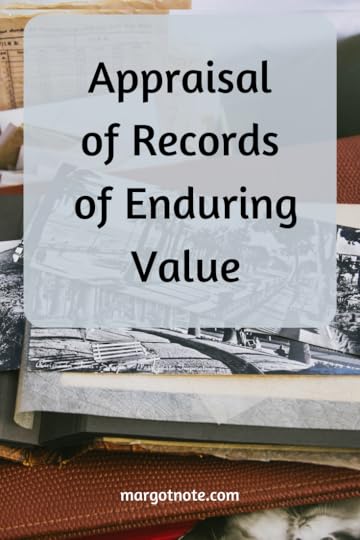
April 19, 2021
Fundamentals of the Appraisal Process in Archives
Archivists gather information about the collections they steward as the first step of appraisal.
They study the records creators because they need to learn as much as possible about the administrative history, structure, and functions of an organization or an individual’s life and activities. If the archivists have a good lead file, they already have some of that information in place.
Archivists next decide on the levels of appraisal. Appraisal can occur at several levels, from the collection to a series within a collection, but rarely at the item level. Often, appraisal exists at the folder- or box-level of collections.
Documentation is KeyArchivists document the appraisal process. The archives should be able to review the recommendations for accountability reasons. Archivists may be reluctant to write down what they have gotten rid of, but the process should be transparent. The information in the appraisal report, which should be written and kept in the files, is useful for further processing.
Sometimes, with institutions, an office survey is useful to go beyond the level of a specific collection or record group. This activity is part of records management and can be important if the repository deals with the records of an ongoing, active organization to set up communication channels for future negotiations.
Archivists should reappraise when necessary. Reappraisal is an essential part of the appraisal process because appraisal is based on judgment—and historical perspectives and institutional priorities change. Often materials were acquired when space was not at as much of a premium, or standards were different, or appraisal did not occur at all.
A Process of QuestioningThe first step is to gather information about the collection. First, archivists look at the volume of material, represented in linear or cubic feet. They also assess dates, both the span of dates and bulk dates. For example, if a collection has a few nineteenth-century items and most material after World War II, a range of 1820 to 1960 can be confusing for researchers without the inclusion of bulk dates.
Archivists review the condition of the materials. They look for signs of mold, insects, and poor storage and note problems and exceptions. If the archivist saw the collection in situ and packed it before it was transferred to the archival repository, he or she will have a better understanding of the collection’s condition.
They look at the physical types of materials, examining formats, anything noteworthy, or items that require special handling or storage.
Archivists also think about arrangement. Is there an existing order that can be discerned? Any order at all?
What is the administrative origin of the collection? Can archivists identify the organization, people, family that created the records?
Archivists seek key correspondents. They look for both frequent correspondents and anyone noteworthy, which can be highlighted later in the collection’s description.
Are unusual materials included? Based on the knowledge of donors and records creators, is the content expected in this collection? They highlight anything out of the ordinary.
They think about the potential uses of information. Archivists can sometimes extrapolate based on the records analysis and on-site discussion with donors or records personnel.
What is the frequency and nature of the current use of the records? This question comes into play with organizational records and connects to records management issues. Frequently used files may not be ready to enter the archives, but records often used are often more likely to have value.
Archivists consider the relationship to other records. How does this material fit with existing collections?
Advanced AppraisalAs archivists become more comfortable with the appraisal process, they can further explore basic archival theory’s interrelationship with appraisal theory. They can consider how they think about archives’ purpose and how this purpose intersects with how they feel about selecting records. They consider archival ethics applied to collection development and donor relations. They may also consider methods related to reappraisal and deaccessioning in their institutions and articulating these practices in related policies and procedures. Most importantly, they can hone their ability to apply appraisal theory and methods to increasingly large collections of materials.
The blog was originally published on Lucidea's blog.
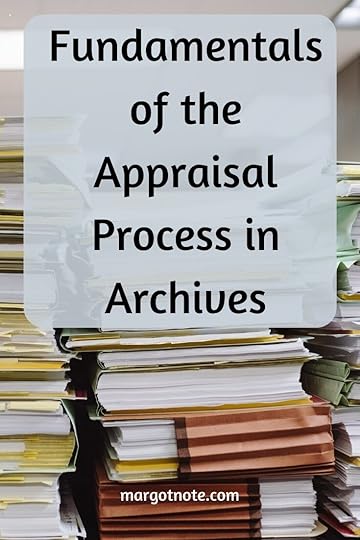
April 12, 2021
Acquisition Strategies for Archives
Many archival repositories have acquisition programs. These programs also work in collections that collect a little of everything, such as local history institutions that acquire primary source materials and published monographs and serials.
For institutional archives, selection and appraisal are also linked as archivists are dealing with ongoing series of records, such as open-ended runs of files in active organizations, rather than a finite body of material that a manuscript repository might solicit. In that respect, the acquisition and appraisal processes relate to the field of records management.
In any case, acquisition needs to be a conscious decision-making process, as processing, storing preservation, and providing access are labor-intensive and costly. Regardless of the source of the repositories’ records, archivists need to consider how to acquire records, why to acquire them, and what records they should collect.
Who Decides?The major question is who has the responsibility to collect for the repository. Does it lie in the hands of the director, curator, archivist, faculty members, the board of trustees, or a committee? The answer depends on the institution.
Every repository needs clear lines about accepting materials and safeguarding its ability to return unwanted materials. For example, some repositories use receipt forms when a potential donor shows up and the person with authority is not present to vet the donation. The form indicates receipt of materials but explicitly states that the receipt is not a final agreement. These are also useful when time is needed to decide whether the gift is appropriate.
Archivists base decisions on the repository’s collection policy, which offers an opportunity to examine the institution’s purpose, the types of programs sponsored, and its priorities. Collecting policies are never etched in stone; they should change over time as the institution changes. They provide continuity over time for staff, administration, and donors.
The sheer abundance of modern records requires archivists to define specific criteria for collecting records. Adherence to a collection policy may cause repositories to turn down collections offered to them. However, not following a policy limits the ability to care for collections, by wasting valuable labor, storage, and funding resources.
Types of RepositoriesThe type of repository defines the framework for collecting. Most archives fall into one of three categories. Institutional archives have in-house archives that acquire and maintain the parent organization’s records, or those of inter-related organizations or subsidiary groups. For example, a diocese might preserve its organizational records, as well as those from any schools or hospitals it runs. Collecting archives collect material of a defined area, be it geographic, like a state historical society, or topical, such as the Schlesinger Library at Harvard that collects women’s history materials. Lastly, a combination archives is an institutional archives that collects more broadly in the manuscript area. For example, college and university archives often collect beyond official records of the university and its faculty.
These institutional scopes, and even collecting policies, tend to be broad and do not provide definitive answers on the pros and cons of a specific potential acquisition. Archivists tend to view materials in terms of format. For example, archivists consider correspondence, photographs, or annual reports as artifacts in themselves, not necessarily for the information they hold. Archivists describe materials in that manner; format terms are often noted in finding aids or descriptions of collections. However, the format terms only hint at what the documents might reveal.
Coherent CollectionsAcquisition procedures allow repositories to increase the scope of their holdings. Most importantly, following acquisition and collection procedures ensures archival institutions will hold coherent, related groups of records of enduring value—rather than a collection of interesting but unrelated documents that may or may not be historically significant. Given that archival collections require so much labor, skill, and resources to preserve them, these policies help guarantee that the most appropriate and historically significant materials are safeguarded.
The blog was originally published on Lucidea's blog.
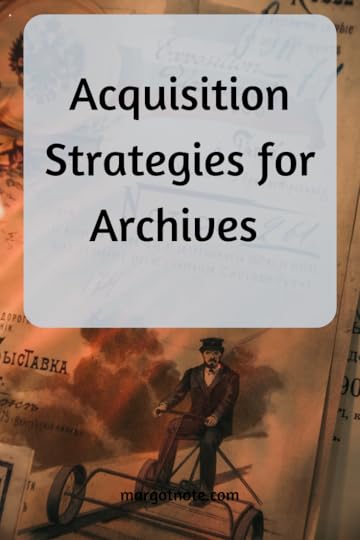
April 5, 2021
The Essential Nature of Archival Records
The motives for creating records vary. They can be personal or come from others. Examples include correspondence and diaries. People create records for social reasons, produced by an array of organizations.
Individuals act together in groups, and those collective activities produce documents, such as membership rosters and meeting minutes. Financial issues result in records documenting acquiring, spending, and managing money. Legal reasons include the protection of a right, proof of ownership and service, and court records.
Records can also be instrumental, serving specific functions. For example, maps and blueprints are records designed to fulfill specific tasks. Records may also be symbolic, where the items take on artifactual or cultural values. For instance, universities issue diplomas to graduates, but diplomas are not how people prove they graduated from an institution. Understanding these motives helps archivists place records in context, which helps them conduct the archival functions of appraisal, arrangement, and description.
No matter how they were created, archivists work with unique records. Many archival records are one-of-a-kind, especially older documents. Archival collections also consist of documents that may be one of several copies of the same item, and many more copies and versions of electronic records. The aggregate—the accumulation of records that form a person’s papers or the organization’s records—itself is unique.
Contemporary RecordsContemporary records have certain characteristics. They are abundant, both in creation and duplication, and collective. Archivists tend to think in terms of accumulated items because of the way archival materials accumulate. Focusing on individual items is impractical; it is more cost-effective and useful to think of groupings. The theory and practice of appraisal, arrangement, description, and often preservation is geared towards groupings of materials and not individual items.
Records are decentralized. No longer do archivists collect only the papers and records of the elites. History demands a more democratic approach to archival acquisition and preservation. However, changes in recordkeeping practices and technology have altered how records are created and stored. The days of secretaries typing letters and central storage files are over. People create their documents and keep them on their computers.
Records are interrelated. The documents of public and private organizations, government, corporate, and not-for-profits are connected and interrelated. Archivists need to collaborate with their colleagues as an organization’s records are likely to be spread among repositories. The lines between published and unpublished information were blurred even before the Internet.
The decentralized and interrelated nature of records creation and communication have emphasized the role they play in communication among people—their social nature. Archivists should pay heed to how records represent social interaction and community building.
The shifting usefulness of records gets to the heart of what archives are. Records are created by individuals and organizations while doing day-to-day business. They are used for the function for which they were created during a period. At some point, they are no longer needed for that initial function, and archivists must decide if the records have long term value for other reasons. Archivists keep them because of those other values because their use has shifted from the records creators.
Saving RecordsMaterials can exist for a long time but are not entombed. The goal of archivists is to preserve materials so they will be used. Records come alive as they become part of someone’s research. The purpose of repositories is to ensure that important materials are identified, brought into archival custody, and managed to be used.
Archivists live on the horns of a dilemma: their work is a constant balancing act between preservation and access. Archival work consists of selecting, preserving, and making accessible the materials within their authority. If materials are used, they are at risk, but what purpose is there to have materials if they are unused? Therefore, archival records reveal their essential nature for knowledge and scholarship.
The blog was originally published on Lucidea's blog.
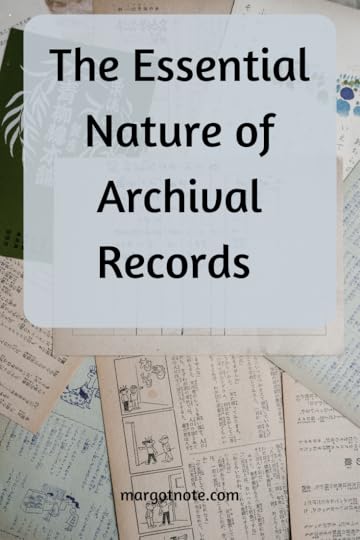
March 29, 2021
Approaches to Acquisition
The selection of records of enduring value is the archivist’s first responsibility. All other archival activities hinge on the ability to select wisely. Archivists must educate themselves about the records of contemporary society and improve archival practice accordingly.
They should educate records creators about the importance of retaining records of long-term importance and inform the public about the essential work of the archival profession, so they will influence and support creators in the preservation of their records.
There are two basic approaches to acquisition: systems and solicitation. Using a systems approach, the archivist works with an ongoing organization to set up arrangements for regular transfer of files. Much of this is based on records management, where decisions are made about the type and source of files, and records retention schedules establish a routine for transfer. Institutional archives tend to use the systems approach.
A solicitation approach, on the other hand, is an acquisition of individual collections, resulting in negotiations for discrete bodies of material. This approach is usually used for collecting archives, repositories that collect materials from individuals, families, and organizations other than their parent organizations.
In soliciting materials, archivists meet and deal with donors, which requires skill and tact. The archivist must always be sensitive to the relationship between the donor and the materials. Archivists may be dealing with the person who generated the collection, a family member, representative of the organization, an executive, or a dealer.
Archives are acquired by both gift and purchase. Occasionally archivists borrow to copy a collection and then return the originals, which is done as a last resort. Possibilities for acquisition range from paying for a collection to requiring the donor to cover processing and preservation costs. The latter is more common with organizational records and ongoing acquisition. The financial aspects behind buying archival collections are purposely secretive, and collections of well-known creators fetch high prices.
A More Active RoleHistorically, American archives evolved into repositories that documented the establishment, with a focus on traditional institutions and “great white men.” The tendency was also to collect what came through the door, rather than to develop an active solicitation program based on a well-conceived collecting policy. Archivists have been rightfully pushed into a more activist and active role by interrelated developments in recordkeeping.
A structural change in society has made the records of organizations and institutions more important than personal papers. Along with this is the increasing importance of government records at all levels. Another factor is bulk. The increase in the number of records has forced archivists to make tough decisions. There is also the issue of missing data: information that used to be recorded in easily preservable forms is now more ephemeral. Vulnerable records also exist. Many kinds of activity are temporal, and the people involved more focused on the work at hand rather than long term preservation of information. Finally, technology has revealed the fragility of digital media. Archivists must get involved in the process of digital preservation at an early stage.
Factors to ConsiderThere are several factors to consider when contemplating adding a collection to a repository’s holdings. First, consider the source. Are these the papers of an individual or the records of an organization? Organizational records are bulkier and more costly to process and store but often have more varied research potential.
What kinds of materials are in the collection? Archivists need to be conscious of what kind of groups generated what types of material, some of which require special conditions or equipment.
Think about the relationship of the acquisition to the defined scope of the repository. Is this collection consistent with the institutional collecting policy?
Ponder the potential size of the collection. How large is it? Is more space required? Large collections should not be turned down for smaller collections. One 200 cubic foot collection may be more historically valuable than 200 one-foot collections.
What is the physical condition of the collection? Where it was stored can alert archivists to potential problems. Will reformatting or conservation treatment be required?
What is the potential research value of the collection? Who might use this collection, and for what kinds of research?
A Broader UnderstandingArchivists play an important role in shaping repository collections. They need to have a broader understanding of the documentary universe, and not just the purview of the individual institution. Archivists should consider all the different formats that document a topic or group in order to acquire primary sources of lasting historical and cultural value.
The blog was originally published on Lucidea's blog.

March 22, 2021
An Overview of Acquisition in Archives
Acquisition is the process of acquiring records by transfer, donation, or purchase. It begins with a lead file, a way to keep track of donor contacts.
Relationships develop over time, and archivists should track any correspondence with potential donors. Background information is important too. Is the collection already in another repository or part of another collection? Is the donor talking to other repositories? Initial contact by an archivist or via a contact close to the potential donor should be treated carefully. The archivist must convince the donor of the sincerity of the repository and why their collection would be a good fit for the institution and its mission.
The examination of archival material is best done in person, although that may difficult with distant collections. Not only should archivists understand what is in the collection, but where materials are stored can be illuminating. For example, if materials are in the office, they are more likely to be of current use to the records creator than if they were in the basement. The arrangement of the office may provide clues to the collection’s provenance and original order as well. Types of storage areas also alert archivists to potential conservation problems.
The Deed of GiftA negotiation of terms follows, which should result in an explicit agreement that covers the physical transfer, the rights of ownership, access terms, and a clarification of copyright. The legal and physical transfer of a collection to a repository should be documented, and that documentation can occur via letter, will, or most commonly, a deed of gift. In any case, the document should contain the following information:
Name of the donor, which is sometimes complicated if a person is signing on behalf of an organization.
Name of the recipient, who in the organization can legally accept materials.
Date of transfer, which might include more than one date, or later materials may be given under the terms of the earlier deed.
Description of material to distinguish among donations.
Copyright, which the donor can only transfer if they have it. For example, a donor might have physical ownership of the letters received, but the writer of the letters retains copyright.
Restrictions, which outlines who can impose them, who can lift them, and to whom do restrictions apply.
Disposal authority because the archives may want to discard items from a collection. Does the donor agree, or do they want everything returned?
Additions, if subsequent gifts are possible.
Physical TransferThe physical transfer is also best done in person for several reasons. The archivist can note where materials were stored before packing and can be clear as to what is next to what in the containers and the number the containers. Archivists can also get a lot of information from the donor during this process, information that is likely to be useful later during arrangement and description.
Archivists also follow-up after the transfer. Acknowledgment of the collection is essential, as is following through on other donor wishes or resolving any disputes of the agreement.
Some Bumps on the RoadThe acquisition process is not always straightforward. For example, archivists need to make sure that the person has the right to donate the material, which is not always the case and sometimes unclear.
Monetary appraisal may be an issue. When donors ask for an appraisal for tax purposes, archivists must refer donors to qualified appraisers and cannot be a party to the transaction.
Handling RestrictionsThere is also the matter of restrictions. Materials can be confidential by law or can contain information that necessitates closure or limited access. Archivists should determine this at the time of transfer, and any restrictions should be articulated in the gift agreement.
While archivists try to make as much material open as soon as possible, they also recognize privacy issues. Sometimes the donor brings them up; sometimes, the archivist uncovers such material during an examination of the collection. Restrictions do not have to apply to the entire collection; they can apply only to relevant series or files. Restrictions should be clear and equally applied to all users and have an endpoint. Restrictions can result in files being closed or require the permission of the archivist. Restrictions can also indicate that individual names cannot be used in cases where aggregate data is permissible, but not the release of personally identifiable information.
Procuring Comprehensive HoldingsAcquisition allows the archival institution to make decisions and allocate resources. It permits the repository to procure comprehensive holdings in a planned, coordinated, and systematic manner. The process is a basis for acquisition strategies and helps plan for the efficient identification and preservation of archival materials.
The blog was originally published on Lucidea's blog.
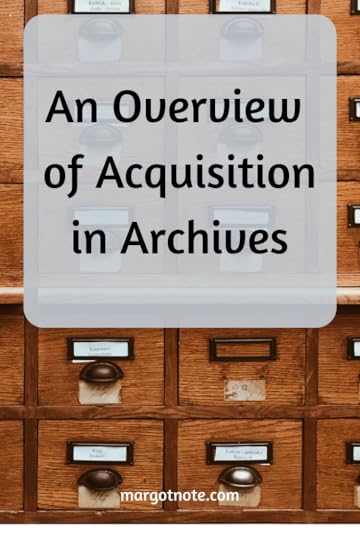
March 15, 2021
How Does Archival Selection Shape History?
Collection development establishes policies and procedures used to select materials that the archival repository will acquire; it identifies the creators, subjects, formats, and other characteristics that influence the selection process.
Although theories of collection development originated from libraries, the concept is important for archives because it guides acquisitions and the scope of their collections. Archivists can apply collection development concepts from library science to the archives, especially examining the strengths of the collection, present collecting levels, identified weaknesses, and desired levels of collecting to meet program needs.
A Representative Historical RecordCollection development and accessioning is the starting point of all archival collections. The archival profession has advanced enough that archivists have transitioned from collecting everything to choosing what to collect, given the abundance of contemporary materials. Archival selection shapes history because diplomatic choices must be made to represent the historical record.
Collection policies seek to eliminate problems, lessen competition, and provide an avenue for deaccessioning. A repository acts unethically when a collecting policy is absent, or so vast that records cannot be processed promptly, effectively blocking them from research. Collection development practices ensure that a repository has a clear, distinct focus so resources can be invested in making records of enduring historical and cultural value available for use.
Most archives strive to have strong relationships with other area repositories whose collecting missions complement and coincide with their own. Archives staff should make referrals whenever possible if materials offered to their organizations do not fall within their collecting scope yet may be appropriate for these repositories. A collection development policy outlines the boundaries between what is collected and what is not to help guide these decisions.
For many archival repositories, scholarly research value is the primary criterion for collecting materials, but exhibit and educational value may also be considered. Collecting foci are usually based upon knowledge of researcher needs. They are guided by current strengths as well as areas where archivists see a need to build the collection. Condition, size, and conservation needs of the materials, as well as the organization’s ability to meet those needs, are also considered in collecting decisions.
The Archival PurposeThe purpose of collection development policies and procedures is to outline the scope and rationale behind collecting at the repository. It assists in furthering the institution’s mission and upholding the professional standards of the archival community. It also aids the archives staff and other key stakeholders in the selection of materials in a planned, realistic, and cohesive way, tied to the institution’s resources and priorities. Further, it informs the public of the repository’s selection priorities. It encourages the donation of materials that support its mission and goals. Repositories also recognize that their collecting efforts may change over time in response to a variety of factors. In response to this, they review their policies regularly to ensure that they are up-to-date and aligned with their mission.
Shapers of HistoryThe use of the collection analysis methodology takes archivists away from their traditional role as custodians of the past. It moves them toward a more active one as shapers of the historical record. Even when archivists believed subjects were adequately covered, they discovered through collection analysis that they were not. Archives do not just happen of their own accord. Individuals and organizations create records and use them to support their values and missions, all of which comprise processes that are not politically and culturally neutral. Archivists decide to preserve them—or not—in similar partial ways.
Although it is daunting to think of archivists as shaping history, it is also a powerful statement. Rather than being custodians of information, archivists are actively examining their own materials as well as reaching out to donors to create more representative collections. They should ask themselves, “How am I shaping the history of my organization? Will I do it passively, or will I take leadership?”
The blog was originally published on Lucidea's blog.




